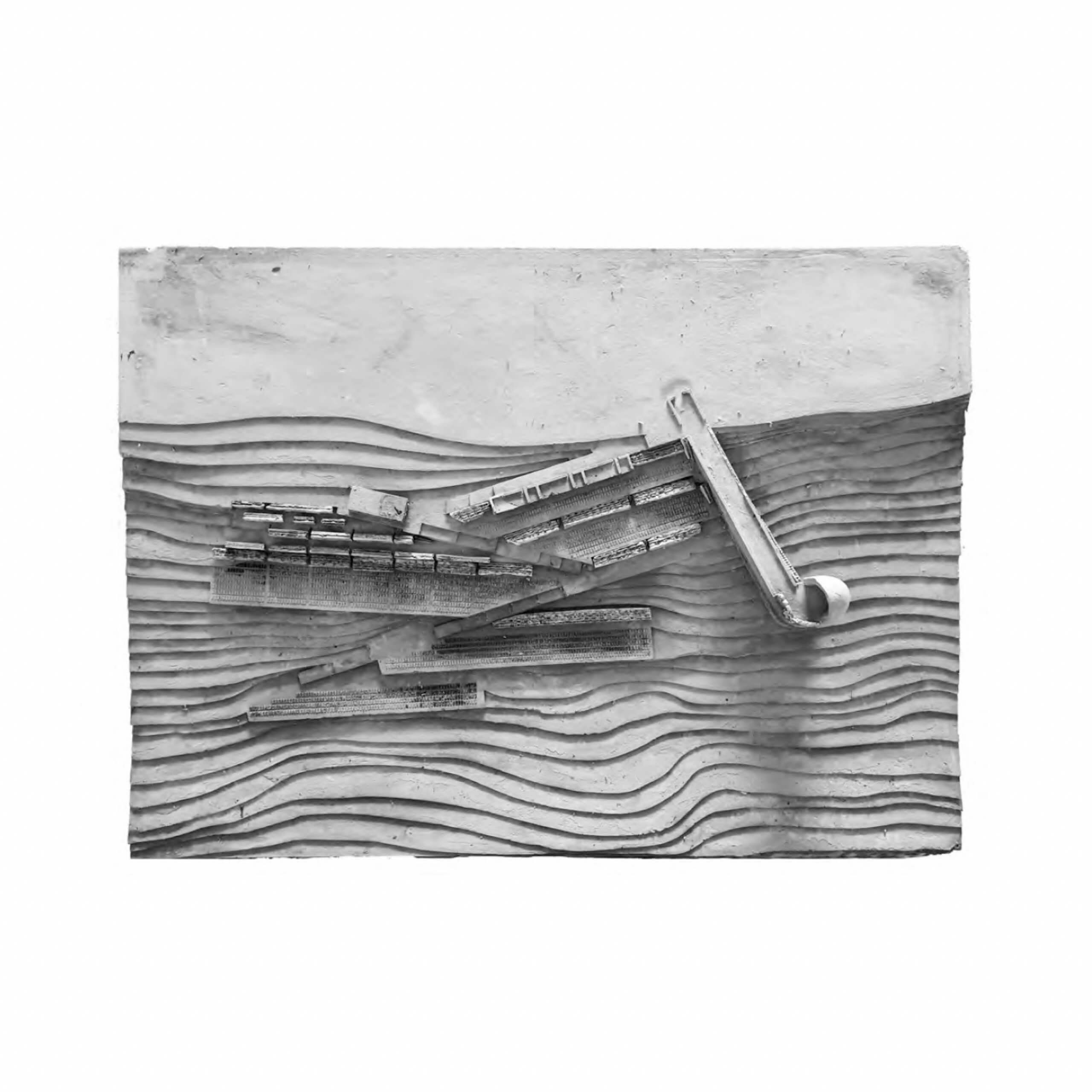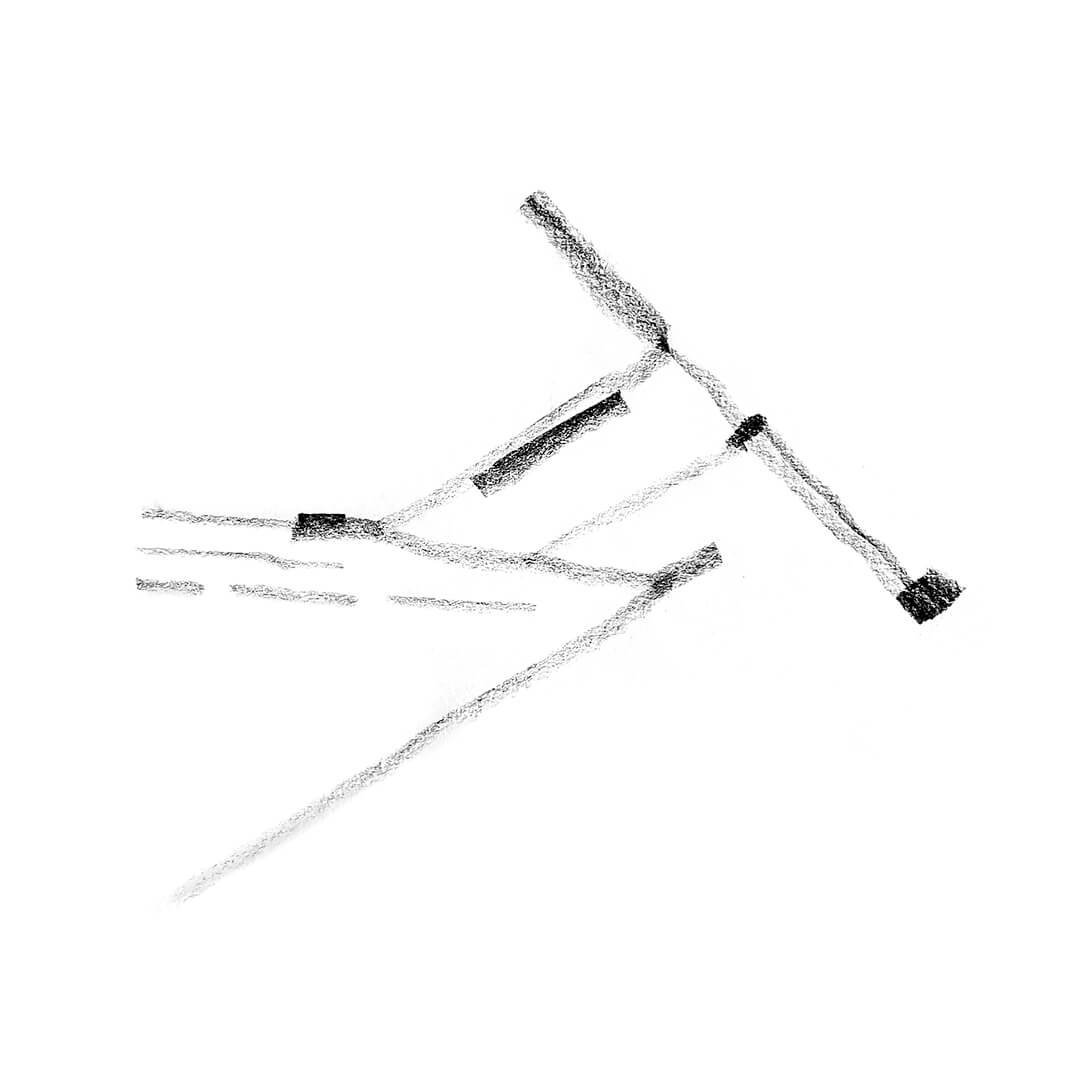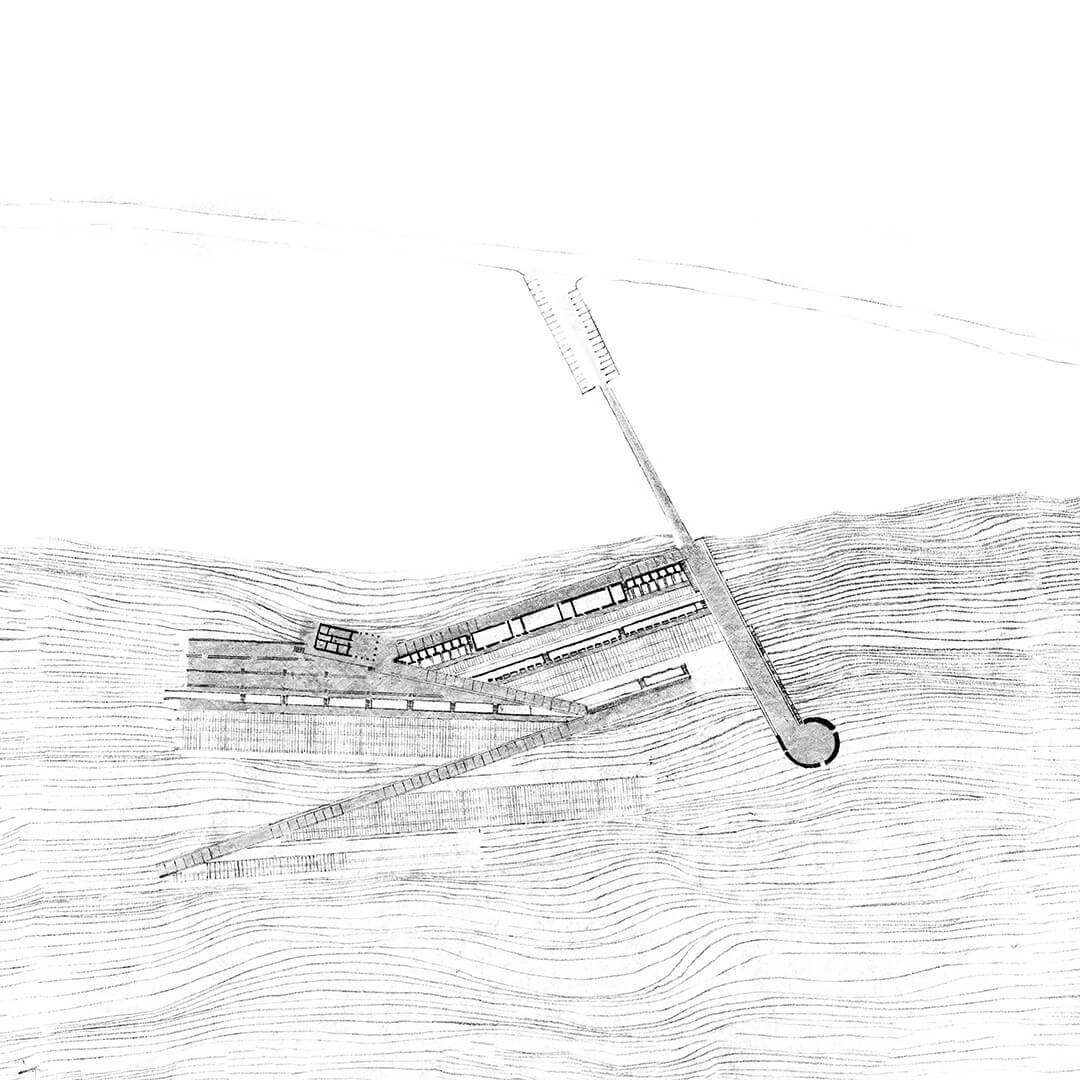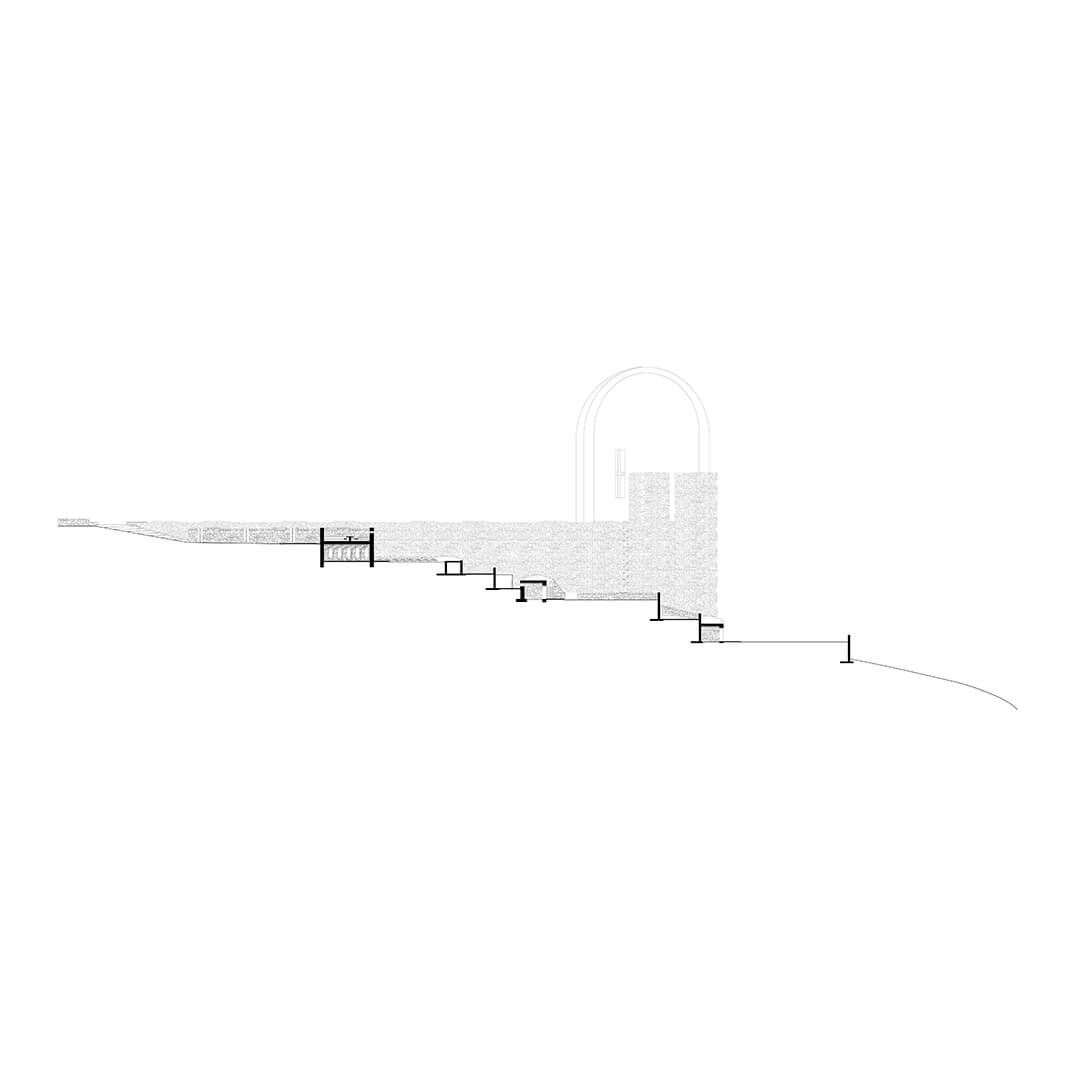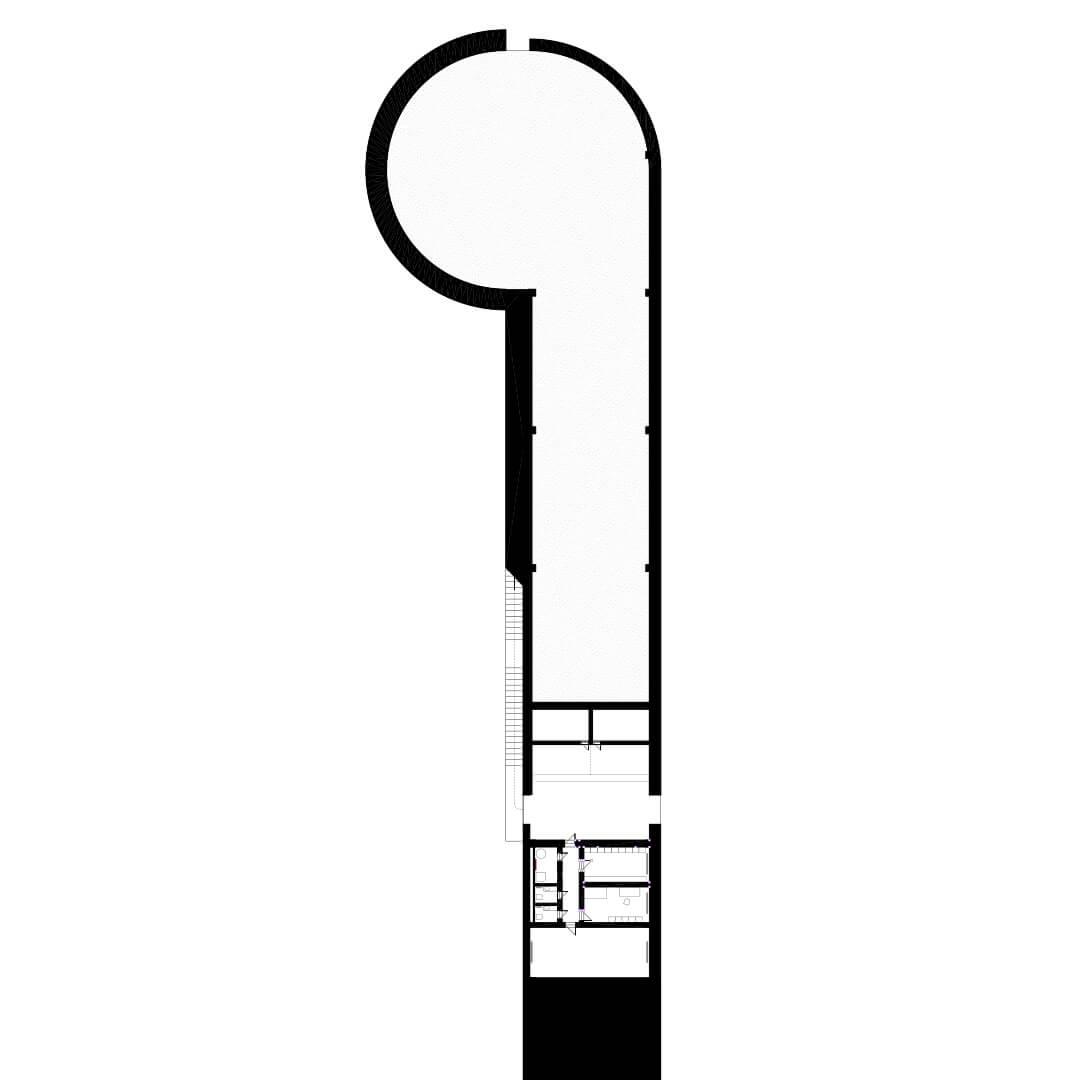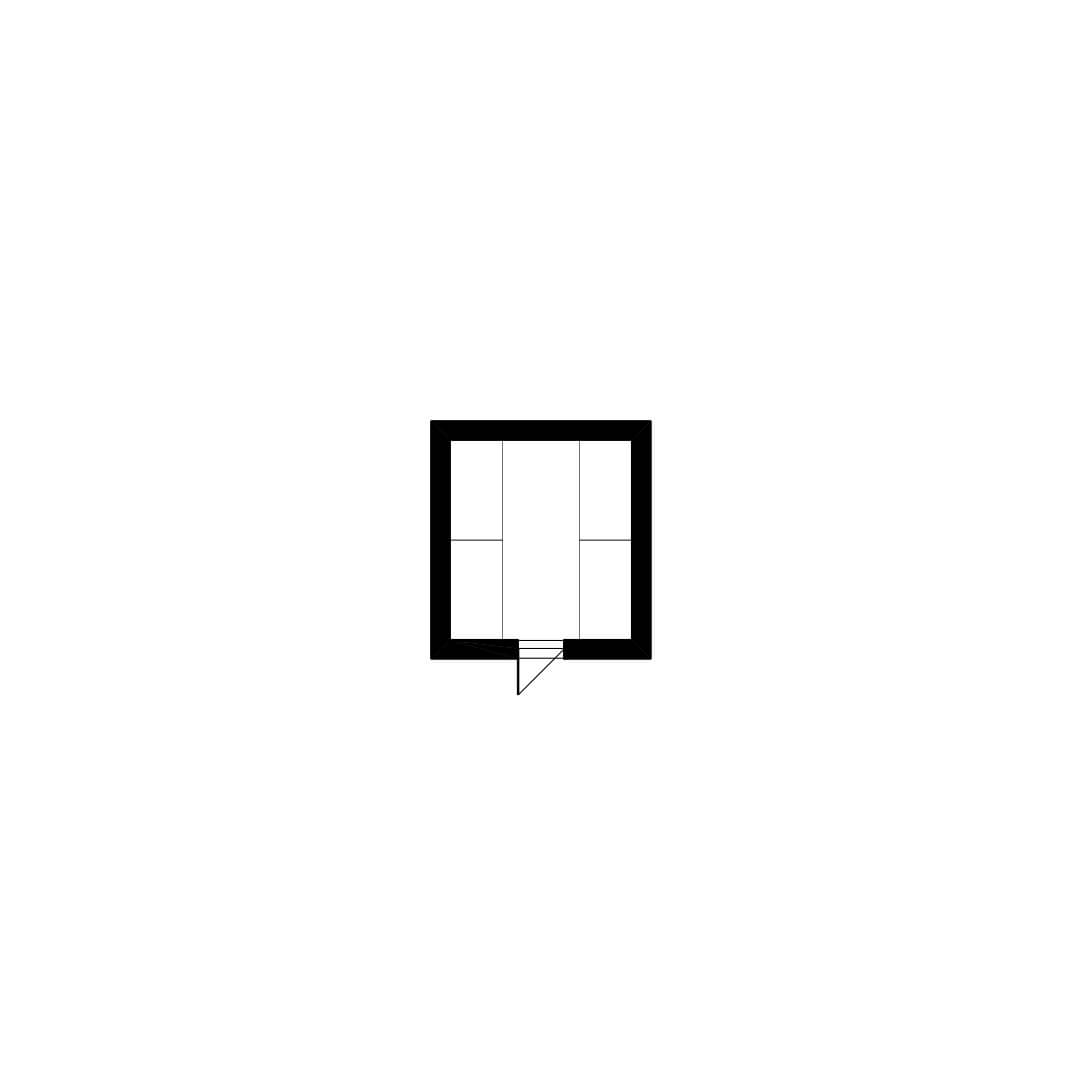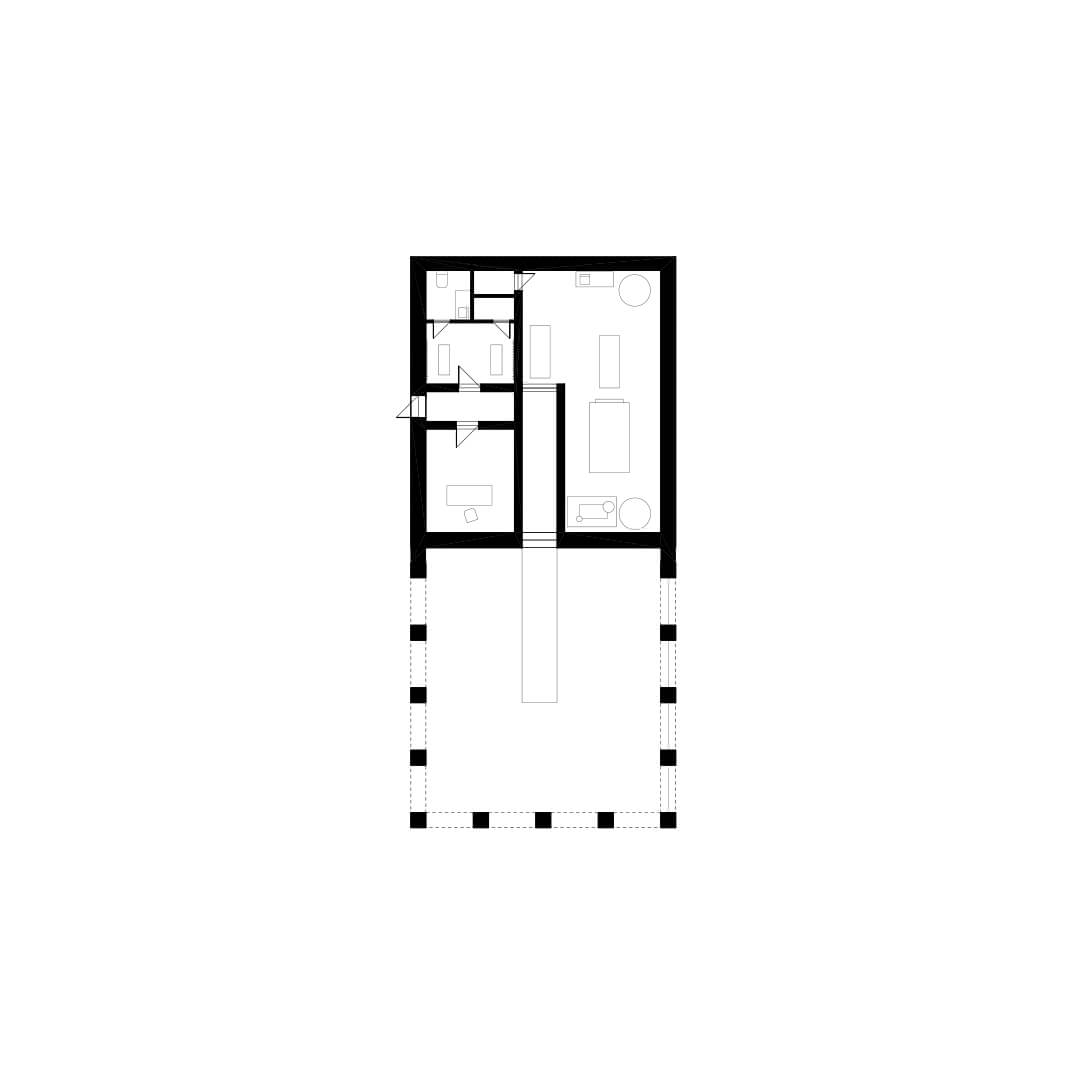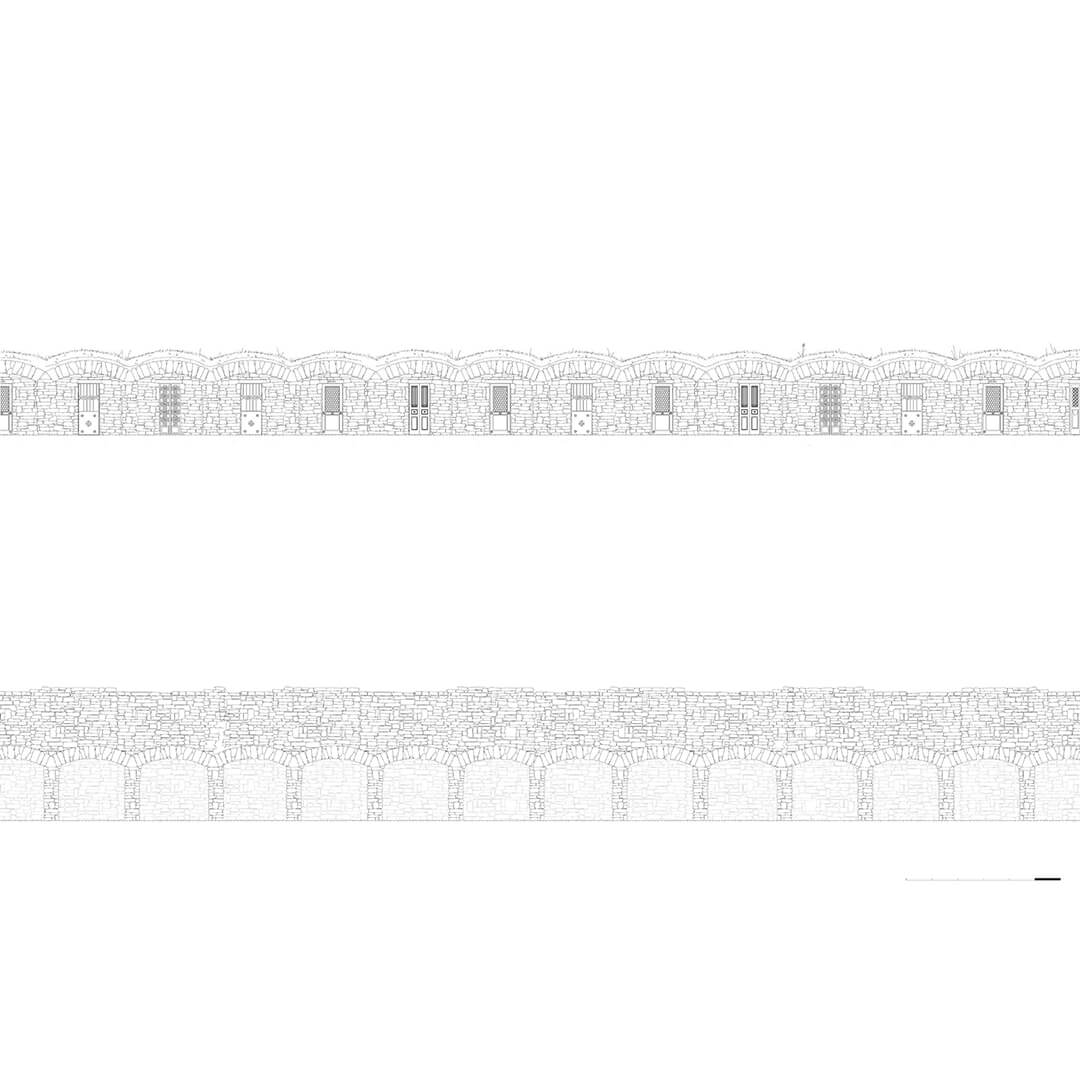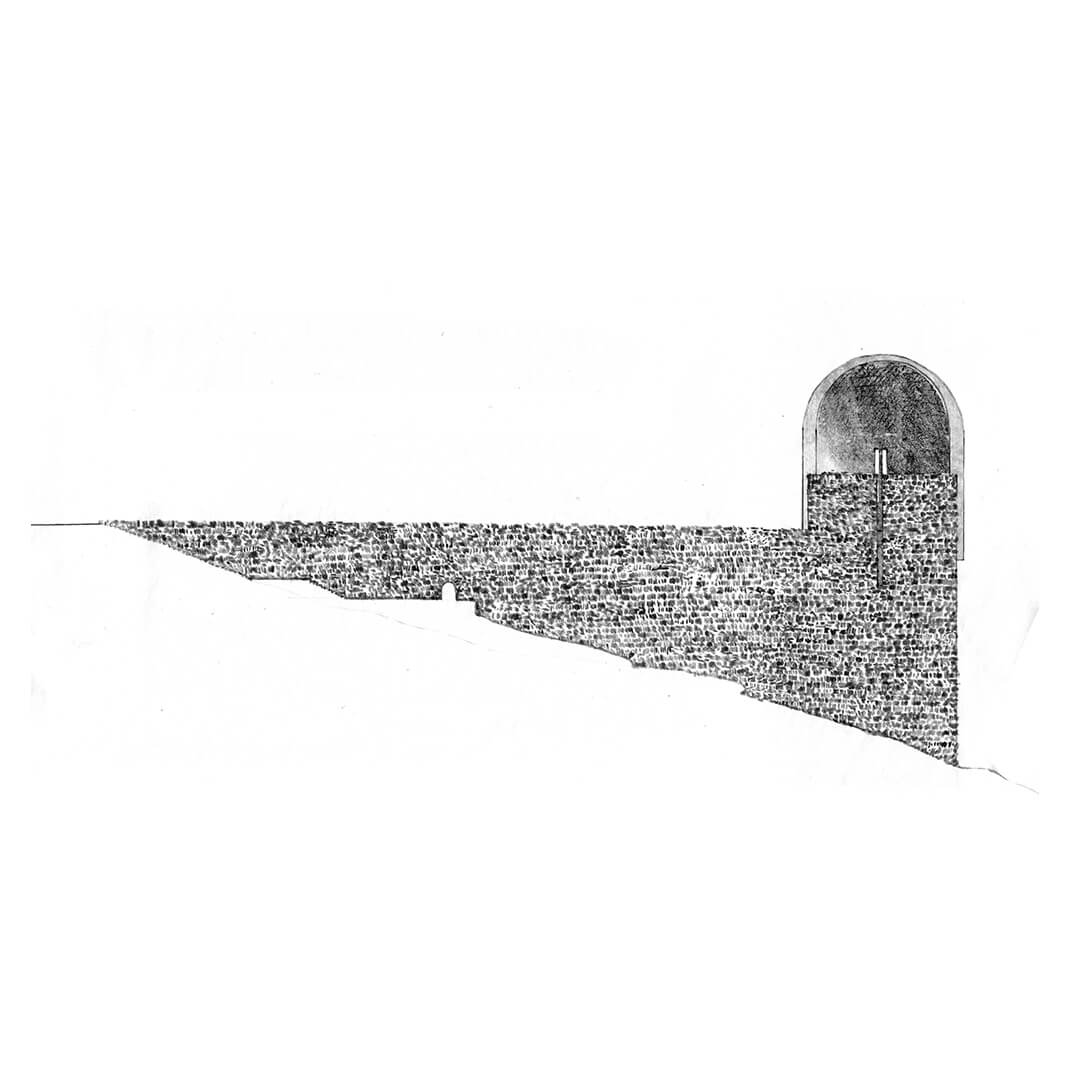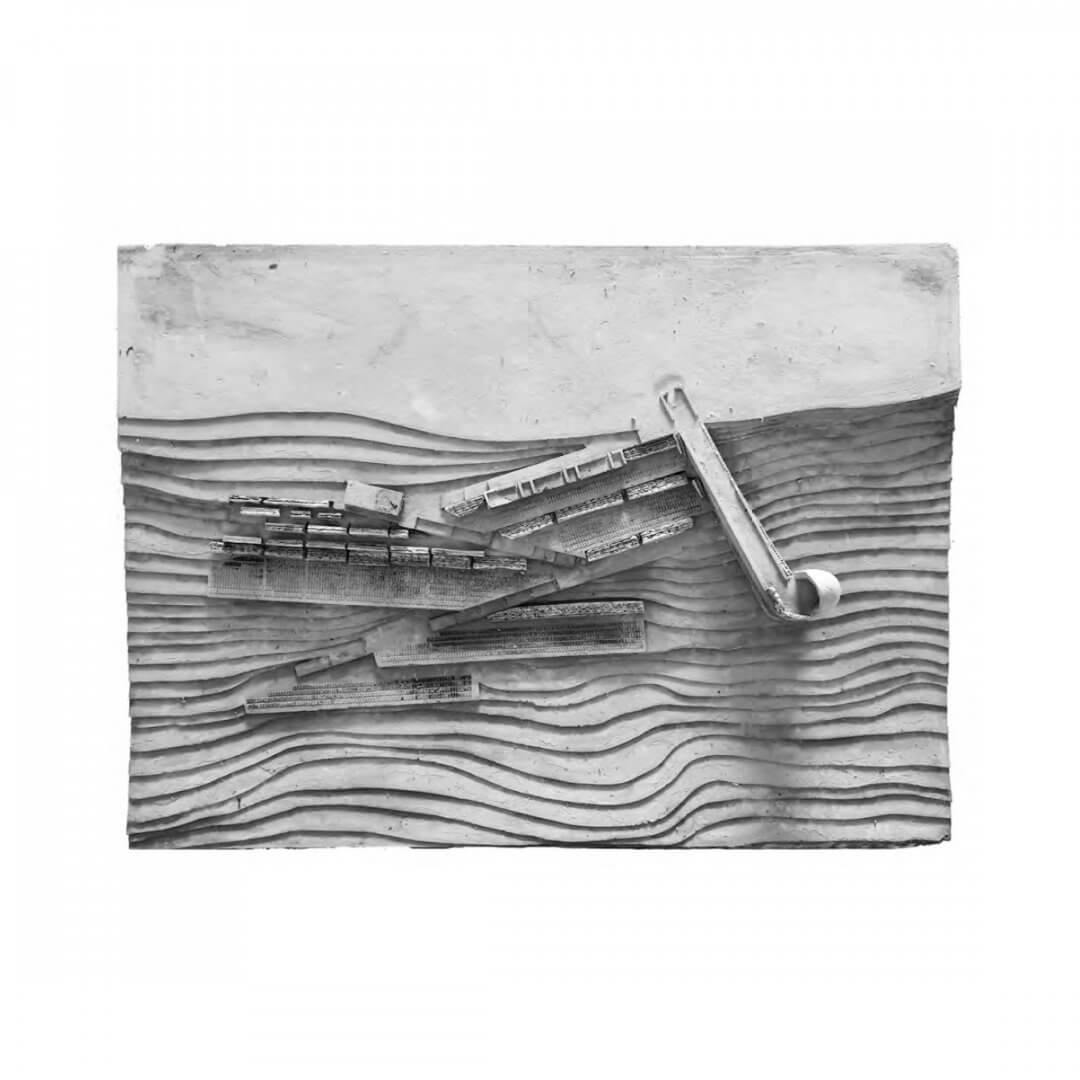Veronika Davitashvili
The architecture of the complex is based on the idea of rethinking gravity as a life-defining force. Life is overcoming gravity, and death is submission to it.
Gravity is both the source of everything and the single law. It is the aspect of reality with which everything and everyone unconsciously interacts. Just as we breathe atmospheric air, we move according to the force of gravity. Any activity is inevitably a process of overcoming gravity. From the moment a baby leaves the womb and takes its first breath, every movement defies gravity. In the early stages, this overcoming is of an exploratory nature, later it turns into an aggressive one. This arrangement or development is a natural need.
On architectural mass: What is mass? – Mass is the result of gravity, that is, a material body created by gravity and acting according to its laws. How is mass formed? – It forms itself or is formed from outside, providing its own stability. How does a person perceive mass? – Physically or through learned images. Man lives in a cluster of architectural masses. This cluster is becoming a new form of ennobled space. The process of forming this mass is architecture. Architecture is a means of overcoming gravity, necessary and similar to man. As long as the concept of architectural mass persists, as long as it continues to meet the above criteria, architecture remains subject to gravity. As long as the tectonics of the building corresponds to the current level of understanding of space, architecture exists in the world of physical laws next to man. As soon as this connection collapses, the concept of architecture ceases to be applicable. At this point, works appear that may later be referred to as a breakthrough, but at the time of creation, they will remain an artistic gesture or an engineering experiment.
So the “flesh” of the building must retain its tangibility. In this paradigm, material, construction, and form become primary concepts, while function is generalized and relegated to the background. There is a concept of gravitational architectural mass. The gravity of a building is the ability of a person to correlate his physical experience with the architecture that is presented to him. Without this characteristic, the building turns out to be foreign in the general mass and falls out of the developed space. Gravity in corporality.
The site is located on the border of Georgia and Azerbaijan, in the Kakheti region. This area is called the Georgian desert – this is the most uninhabited part of the country. The only road that crosses these places connects Tbilisi and several monastic complexes. In addition, the Georgian desert has an unusual geology. This is the Javakheti volcanic highland, which is characterized by lava plateaus, chains of volcanoes and canyon-like river gorges. At the junction of two lithospheric plates, a series of young mountains with a folded slope surface and a layered structure formed from a weak impact.
The program of the building relies primarily on the tradition of Kakhetian funerals. Usually the ceremony begins at home. The coffin is placed in the living room, where friends and relatives come to say goodbye. Women sit around, they greet the guests with their crying. Men stand outside and meet those who come at the gate. The farewell lasts about 4 days, during which time close relatives and friends should have time to pay tribute to the deceased. At the end of 4 days, the coffin is carried in the hands to the church for the funeral service. Along the way, friends and neighbors say goodbye to him. The funeral lasts about 4 hours. After that, the coffin is placed in the grave, poured with oil, water, sprinkled with a handful of earth. The men then bury the grave, while the women leave to prepare the house for the wake. The projected cemetery is not within walking distance of any settlements, and at the same time it has a certain special status, due to which it has places for farewell and commemoration on the territory. So after arrival, the procession moves to the farewell hall, if necessary, or immediately goes to the chapel for the funeral. It follows a system of ramps to the burial site. In addition, the Cemetery supports alternative burial methods that are currently not common in the country. On the territory of the complex there is a bio-crematorium (resomator) and a columbarium. The cemetery is seen as a living organism that expands and grows as needed. The project is a backbone that can and should be developed and completed down the slope.
The structure of the cemetery and the geology of the place is such that the architecture literally slides down the hill, making room for new terraced spaces. The program of the building relies primarily on the tradition of Kakhetian funerals, which defines the architecture of spaces that the procession passes.
Author: Veronika Davitashvili.
Location: Kakheti, Georgia.
University: MARCH architecture school.
Year: 2019
